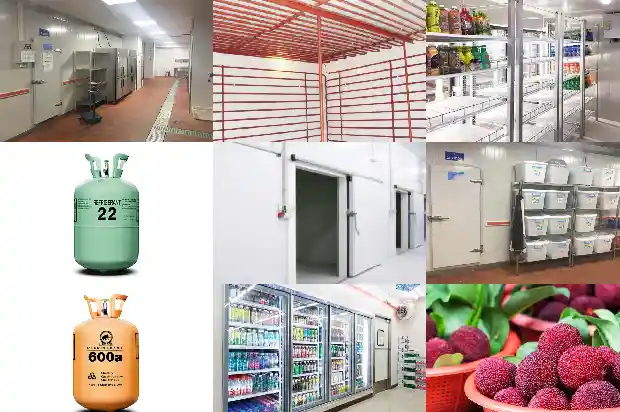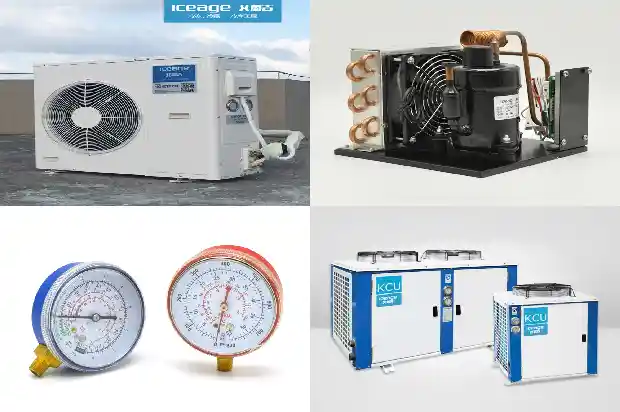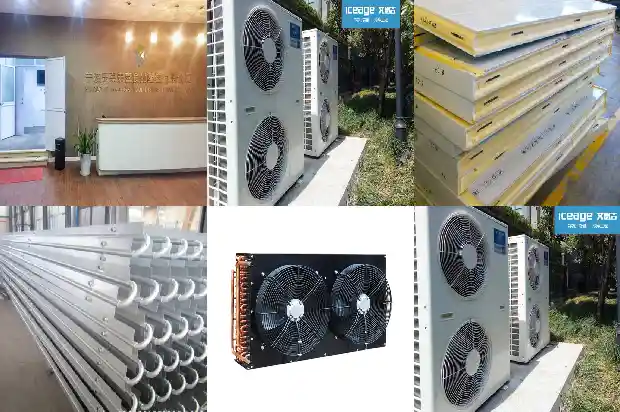How to Properly Remove Ammonia Refrigerant during Refrigeration Parts Repair
2025-03-18
During the repair of a refrigeration machine, if there is a fault in the components of the system from the compressor discharge shut - off valve to the outlet valve of the receiver and they need to be disassembled and repaired, in order to reduce environmental pollution and waste, the refrigerant should be removed and stored in another container. In addition, if the refrigeration unit is out of use for a long time, to prevent leakage or when it is necessary to change the refrigerant, etc., the refrigerant also needs to be removed.

- Preparation before operation
First, prepare all the tools and emergency supplies before operation, such as ammonia tanks or a certain number of ammonia cylinders, scales, connecting pipes, fitter's tools, gas masks, rubber gloves, and first - aid medicines. Then adjust the relevant valves of the system, close the liquid supply valves to the low - pressure equipment and the evaporator, start the compressor to pump the ammonia liquid in the low - pressure system to the condenser and the high - pressure receiver. Place the ammonia cylinder upright on the scale, and use a high - pressure rubber hose (with a pressure resistance of over 3 MPa) and a pipe joint to connect the empty ammonia cylinder to the ammonia discharge pipe of the ammonia - charging station. The connection should be firm. Slightly open the ammonia discharge valve on the ammonia - charging station to check the tightness of the ammonia discharge pipe and the joints. Open the pressure - reducing valve on the ammonia - charging station to reduce the pressure of the ammonia tank or cylinder, then close the pressure - reducing valve and open the ammonia discharge valve to discharge ammonia into the ammonia cylinder or tank. - Weighing the ammonia tank
Secondly, weigh the ammonia tank that has been filled with ammonia. Under normal circumstances, it should not exceed 60% of its capacity. When the specified amount is reached, promptly close the ammonia cylinder valve and the liquid valve on the ammonia - charging station, open the pressure - reducing valve on the ammonia - charging station to evacuate the liquid in the ammonia discharge pipe, close the pressure - reducing valve, and slowly remove the cylinder connecting pipe and replace it with a new cylinder. When the ammonia tank reaches the required amount, first close the ammonia tank valve, open the pressure - reducing valve on the ammonia - charging station, pump out all the ammonia liquid in the pipe, then close the pressure - reducing valve and remove the connecting pipe. If the suction pressure of the refrigeration compressor is too low, the cold - storage door can be opened to increase the cold - storage temperature, increase the evaporation amount of ammonia, so that the suction pressure of the machine can rise. The low - pressure system can be pumped to 0.05 MPa (gauge pressure). After the machine stops, if the pressure rises, the machine can be restarted to evacuate. To facilitate the condensation of ammonia, the condensing pressure can be made a little higher, for example, it can be controlled between 1.3 - 1.4 MPa (gauge pressure).
- Completion of ammonia removal
Finally, when the liquid level in the high - pressure receiver drops below 5%, the ammonia liquid cannot enter the ammonia cylinder or tank, and the pressure of the low - pressure system cannot rise above 0 MPa (gauge pressure), it can be regarded as the end of ammonia removal. The remaining small amount of ammonia can be discharged into a bucket filled with water or the condenser pool.
- Precautions
In addition to the above methods, when it is impossible to extract ammonia refrigerant due to the structural characteristics of the compressor itself (such as semi - hermetic and hermetic types), another refrigeration compressor must be used to assist in completing the task of extracting the refrigerant.
Related Articles
- Ammonia Refrigeration vs. Fluorine Refrigeration: Which is Better?
- Where Lie the Key Construction Technologies of the Ammonia Refrigeration System?
- How to Properly Extract Ammonia Refrigerant during Refrigeration Parts Repair
- Which is Better: Ammonia Refrigeration or Fluorine Refrigeration?
- Cooling Operation of Ammonia Refrigerated Cold Storage
- Scheme for the Use and Safety of Ammonia Refrigerants
- Safety Regulations for Ammonia Refrigeration Machine Room
- Cost Comparison of Ammonia-to-Fluorine Conversion in Cold Storage Renovation
- What is the difference between ammonia refrigeration and fluorine refrigeration?
- Compare Various Refrigerants: Gain Quick Insights into Each Characteristic
- How to Solve Practical Problems of Air - conditioner Leakage, Noise and Refrigerant Leakage?
- Manifestations of Insufficient Air - conditioner Refrigerant and Judgment of the Charging Amount
- Four Major Factors Affecting the Boiling Heat Transfer of Refrigerant Liquid
- What Are the Commonly Used Refrigerants in Refrigerators and Cold Storages?
- Comprehensive! Piping and Installation of VRF (Variable Refrigerant Flow) System
- You Might Need This Someday! Check Out the Refrigerant Charging Method for Multi - split Systems!
- Types of Refrigerants and Leak - detection Methods
- What to Consider When Replacing R22 with Refrigerant R404A?
